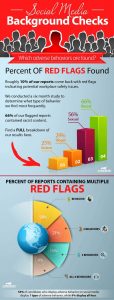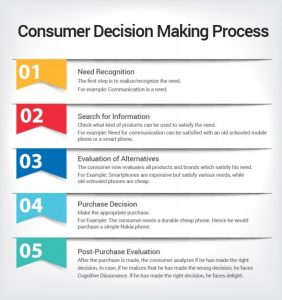The Best Sales Performance Process for a Winning Sales Team

The significance of sales enablement has been in question ever since an increase in the technological competition in the sales industry. But do you think that ensuring the uniform striving of capable employees in the sales team will bring you higher sales performance? Well, unfortunately, not!
Businesses, therefore, demand effective sales enablement programs that will help improve sales performance. Two significant sales enablement models are explained by a group of researchers and Mereo, respectively. Finally, this article gives you the ultimate takeaway that will help you rev up your sales performance.
CSO Insight estimates that the sales enablement function has grown from 25% to 61% in just five years. Why? Because sales enablement has been effectively improving the performance of sales teams across the globe.
What Is Sales Enablement?
Sales enablement is a process that equips sales teams with the resources they need to sell products or services efficiently. It connects marketing and sales, delivering the correct information at the right time to the right people.
Basically, sales enablement acts as a cushion for sales freshers and employees to develop accurate leads of clients for an organization. It can also refer to organizations’ processes to help sales reps sell.
Design A: Conceptualizing & Developing
Avinash Malshe, Scott B. Friend, and Howard Dover propose a process for enhancing sales performance based on the factors mentioned in Sales Enablement: conceptualizing and developing a dynamic capability. The factors included in the research paper are:
-
Sales Support Diagnostic:
This refers to the managerial sales detection of resources that will provide support in facilitating better sales output. It will make up for the flaws of the sales team about their skills. This will involve the prediction of the frontline sales representatives. In short, it is the overall analysis of sales performance and implementation of aids for improvement.
-
Sales Capital Reconfiguration:
This will decide the monetary capital for the functioning sales team. This often results in integrating inter-firm resources and management’s specific orientation of capital.
The monetary investment is directly proportional to the expected output from a sales team. Therefore, effective redistribution of capital is essential in enabling a high-performing sales team.
-
Enablement Infrastructure Rollout:
After the reconfiguration of capital, the infrastructure of sales enablement is updated. Then comes the process of rollout, where underperforming techniques and skills are filtered to prevent potential loss. The flaws of a sales team are identified and eliminated.
The sales process is majorly affected by blockages such as inadequate tools, non-functional team members, and lack of sales training. Rolling out your process is an essential step towards sales enablement. It improves the efficiency of the sales process.
-
Enablement Performance Evaluation:
This way, the sales team is put to work, and the inputs and outputs are measured directly to determine overall performance. According to this, the advancement of the sales team is predicted.
This evaluation is performed after an observation period followed by the rollout. Therefore, the performance of the salespeople is thoroughly assessed during this phase.
-
Enablement Calibration:
This keeps the sales team active and enthusiastic throughout the project. Sometimes, it can be done through feedback, incentives, or other organizational reinforcement.
Based on this step, the sales team members are allotted concerning the sales skill requirement. It is the final step to sales enablement, according to Design A.
Design B: Sustainable Revenue & Sales
Mereo has also proposed a modified sales performance improvement plan to facilitate sustainable revenue performance in the sales enablement program. It consists of the following elements:
-
Buyers’ Journey Aligned Sales:
This refers to the customer awareness training and awareness of the sales representatives. This is the foundation that an organization needs to achieve before they approach its customer base.
Awareness of the customer base in any service and product company helps the salespeople pitch effectively. In addition, it can act as a reference for existing sales agents and as a guide for new sales reps.
-
Sales Skills and Techniques:
Next, you identify and acknowledge your frontline salespeople’s right sales skills, referred to as discovery. It involves the rearrangement of responsibilities that will beneficially obtain results. This can be done through scientific sales profilers (or sales assessments).
-
Sales Ready Assets:
This step takes place after you have selected the competent sales frontliners. Next, there is a need for a proposition that equips them with strong sales assets. There are many assets, depending on the phase of your preparation. (Examples:-prospecting insights, value drivers, solution differentiation, value propositions, and so on.)
-
Cross-Organizational Alignment:
This is the final phase comprising sales negotiation. This enables all the teams to put forth their ideas and opinions. In addition, it will provide the sales team with better industry insights. Hence, this contributes to a common goal of higher-order outputs.
This allows the sales reps to step forward and face the client, according to which the improvement is evaluated. Cross-organizational alignment concerns maintaining the relativity of progress with the competitor sales organization.
3 Ultimate Methods to Improve Sales Performance
Briefly, both models pinpoint certain significant factors that can affect the infrastructure of a sales enablement program. First, to keep up with the evolving trends in commerce, the program must be open to creativity and flexibility.
A company’s sales reps must follow the program strictly to generate substantial net profitability (total increase in revenue obtained). The significant components of preparation according to current trends are as follows:
-
Customer-Sales Reps Alignment:
This refers to the selection of salespeople compatible with the customer base. This will help increase the rate and quality of relationship-building, decreasing the customer churn rate. In addition, the more familiar your sales reps are with your customers, the better your pitches will be.
-
Sales Enablement of Assets:
This refers to continuous skill development and knowledge base development through adopting the authoritative practice. In addition, it allows the organization to permit certain asset utilities for the leading sales frontliners. It also includes enabling sales assets such as advanced and seamless HRTech.
-
Evaluation of Sales Performance:
This refers to the final component that ensures continuous productivity. It involves effectively evaluating and reconfiguring teams to deal with the target customer base. KPIs can be used to monitor your sales team’s inputs and outputs. Identify your high-performing sales team and position client actions appropriately and accordingly.
-
Elimination of Errors in Sales Process:
This refers to the identification and elimination of flaws in the sales process. It improves the sales output by decreasing the possibility of customer churn. It also enables the sales team to convert leads. On the other hand, errors in the sales process can cost you a heavy loss of potential revenue sources.
Sum Up
Sales enablement is essential because it helps your sales team close more deals. It also allows your team to focus on selling rather than gathering information. And it enables your sales team to develop accurate leads of clients for your organization. Back your sales with advanced technological assets.
Improve your sales process with innovative sales enablement. Adopt HRTech tools for sales recruitment, monitoring, and managing your sales team. Expect the best outputs from the high-performing sales reps of your organization through effective sales enablement.
Featured Image Credit: Photo by Fox; Pexels; Thank you!
The post The Best Sales Performance Process for a Winning Sales Team appeared first on ReadWrite.
(14)







